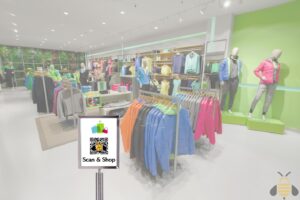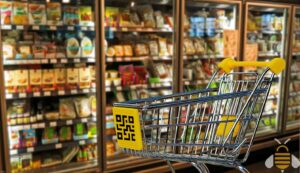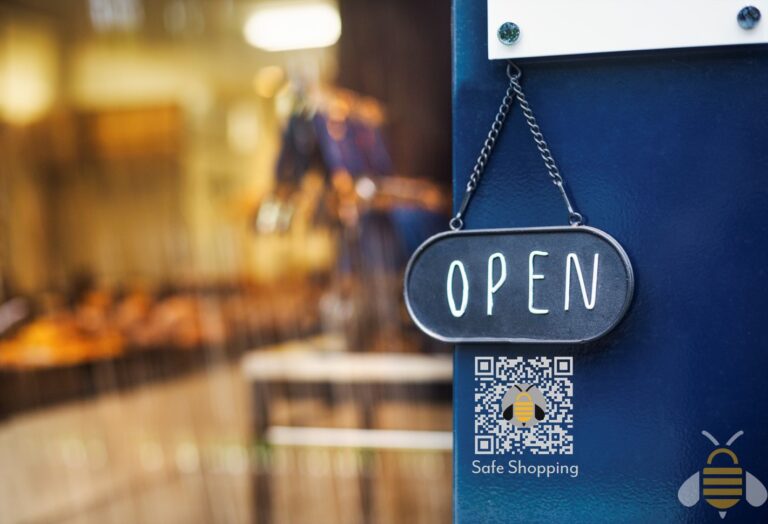Bilal Soylu, CEO of XcooBee
Brick and mortar retail is facing unprecedent times, thanks to Covid-19 and its related impact on consumers behavior and concerns over in-store safety. Because of this, consumers are shifting more purchases to online. With 1 in 4 consumers conducting 90% of their shopping online, retailers face an uphill battle to bring them back to the store, and many experts expect much of this behavior shift to be permanent.
In addition, employees working in the store have similar safety concerns that should not be overlooked. For long-term success to be possible, retailers need to walk the fine line of bringing consumers back into stores while also creating a safe working environment.
Beyond the physical tools needed, like masks, barriers and shields, long-term health effects of living with the pandemic are real and impacting shoppers and workers alike, and more data is emerging to highlight this trend.
From the employer’s perspective, transparency on steps taken for mitigation and associated risks, backed by current scientific data, is a solid basis for communication and marketing efforts. For example, employers could share a CDC page with tips with employees regarding recognizing stress, the impact it has on mental health, what signs to look for and the steps they can take to care for themselves while working daily in a public place.
So, in this light, how can retailers fight to bring shoppers back and keep their employees safe?
In short, retailers are looking at many different elements. The focus is on attempts to merge online and offline experiences into one coherent brick and mortar shopping experience that includes physical safety with social distancing as well as digital closeness through connections using technology.
Here are a few patterns that are emerging:

1. Adjust Store Layout
Everything is on the table for retailers when it comes to layout. Where pre-pandemic objectives for floor space centered around maximizing its use or, in case of grocery stores, turning them into meal destinations. Today, the Covid-19 influence is bringing changes at light-speed.
The new trend for the layout focuses on giving shoppers and employees more room to navigate. For retailers, this may mean less inventory on the floor to allow consumers and employees to move around more freely and easily avoid one another.
Yet, this addresses the safety concerns of both shoppers and employees and removes forced encounters because of space restrictions.
2. Rethink Self-Checkouts
Self-checkouts are popular, and their popularity has increased during the pandemic. Shoppers feel that they are removing a human interaction point and, thus, increasing use of traditional front-of-the-store self-checkout systems.
However, most traditional self-checkout systems are expensive to implement and maintain and are tightly packed, with multiple stations close to each other.
This makes the self-checkout stations a “new”, unexpected chokepoint of congestion and a higher risk area to service for employees.
Employees also require and deserve consideration when designing self-checkouts. For example, employees that are servicing self-checkouts have to clean them more regularly between use, and they are also tasked in assisting shoppers navigate the system; this makes social distancing difficult.
New mobile checkout systems that do not use shared equipment remedy this situation in multiple ways.
• Consumers avoid long wait-lines
• Consumers essentially “bring their own checkout equipment”
• Assistance can be delivered, with one button click, to shoppers wherever they are in the store without exposing the employees
Retailers can easily implement a system, like this, using smart QR codes which reduces congestion and can additionally provide better optics on the store and the consumer.
3. New Shelf Stocking Processes
Replenishing inventory and updating store shelves is a basic task for retail employees. The processes for these, many times, use a “by-piece” restocking model. That means each individual tomato-soup can or pair of shoes is placed on the shelf for shoppers to pick up and add to their cart.
When this needs to happen during store hours in narrow aisles or restricted spaces, breaking social distancing becomes unavoidable.
The approach to inventory replenishment can take advantage of existing store operating data by using a time-separation based model where re-stocking is scheduled for the lowest customer demand times. Thus, retailers need to determine whether restocking really needs to happen during store hours or, if possible, come up with a strategy to do it during off-hours only.
Similarly, a store-ready model can be implemented, where items are assembled in distribution centers to be placed onto the shelf (even with the box), as one unit to speed up restocking times (an additional benefit for the retailer). Think of a rack of dresses can be prepared in backroom and replaced in one shot.
4. Technology based social distancing
Retail technology has so many options for stores, in particular for communicating with consumers and employees to maintain safe distancing. Also, technology enables shoppers to use curb-side pick-up but, better yet, it can also assist them in creating self-checkout options that work anywhere in the store, so shoppers feel safe during the check-out process and don’t have to be near employees or even other customers.
Moreover, by removing the hard requirement that forces shoppers to come to the front of the store and use cashiers and registers to pay, shoppers’ ability to pay anywhere in the store is a pretty attractive marketing strategy. I recommend looking at mobile enabling your store(s) with modern store and checkout system that does away with fixed checkouts.
5. Bring digital closeness to your in-store
While we focus on social distancing, we need to also look at the human need to stay connected. This is coupled with the inevitable confusion when shoppers search and require assistance. We need to connect shoppers to employees, but this does not need to be in person in the same location. New technologies can support new in-store to consumer connections.
“Digital closeness” can assume many different forms, but it still focuses on customer engagement while they are in the store. Ideally, the checkout and retail system connect shoppers to employees, while they are shopping, to achieve this kind of digital closeness.
For example,
• help shoppers find products without them having to find an associate first. Instead, they can use their phone
• deploying “How can I help you” through a facetime-like experience can ensure social distancing for both employees and shoppers while still enabling personal assistance

The Merged Reality
The in-store experience should be seamless, frictionless, and easy for shoppers and employees to grasp. Consumers, today, mostly want to get in and get out. While there will still be impulse purchases, more consumers will research what they want to buy before heading to the store, rather than just walking in to browse.
There is no doubt that difficult times will demand their toll on the retail industry, and we are seeing shifts in consumer behavior that may well be permanent, but retail will not go-away. It will adapt to the needs of the customer and more technology will come to meet those demands.
Both shoppers and employees need to be kept safe for this model to work long-term. This article has highlighted some approaches, but it is not a comprehensive list, and the situation continues to evolve. And believe it or not, moving a store towards a more digital, self-checkout process is neither as overwhelming or time consuming as one might think, and consumers will applaud the move.
The key is to examine and question the processes that have been implemented and used in the past, and do not be afraid to question everything and look around for emerging tech to innovate these processes. We believe that is the only formula that will help retailers find the path that will work for the store, shoppers and employees.
About the author
 Bilal Soylu is CEO of XcooBee, a privacy and payments startup, focusing on contactless solutions for hospitality and retail. Bilal spent more than two-decades in supply chain technology leadership and business consulting in multiple industries including retail, hospitality and financials.
Bilal Soylu is CEO of XcooBee, a privacy and payments startup, focusing on contactless solutions for hospitality and retail. Bilal spent more than two-decades in supply chain technology leadership and business consulting in multiple industries including retail, hospitality and financials.
Related Articles

The Rise of Digital Experience Platforms (DXPs) in Software Development
Software development is evolving, as Digital Experience Platforms enable the delivery of a personalised digital cross-channel experience. A DXP delivers integrated content, Artificial Intelligence, and low-code rapid application development tools. It streamlines the work of developers as well as marketers.

7 Employee Benefits That Can Help Your Business Increase Staff Retention
With so many businesses vying for the attention of skilled job candidates, it’s becoming more important to look for ways to make your offerings more appealing by adding unique perks that not every employer does.

How Retailers Can Prepare for the Summer 2025 Shift
Rather than focusing on isolated touchpoints or departmental KPIs, journey management provides a way to understand where the most critical pain points lie and how to resolve them systematically across the business.

Retailers Are Drowning in Data – Journey Management Could Be the Lifeline
Rather than focusing on isolated touchpoints or departmental KPIs, journey management provides a way to understand where the most critical pain points lie and how to resolve them systematically across the business.



 for the latest news and job opportunities in retail tech
for the latest news and job opportunities in retail tech 